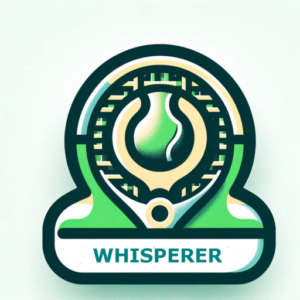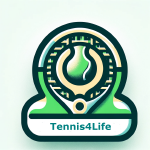Restarting After Tennis Elbow Injury
Restarting After Tennis Elbow Injury
A Simple Return-to-Play Plan
Tennis elbow isn’t something you can rush through. Rest alone won’t fix it, and playing through the pain only makes things worse.
What you need is a progressive plan that calms the tendon, rebuilds strength, and gradually reintroduces tennis-specific demands.
This framework blends tendon rehab, strength, and smart load management to guide you safely back to the court and builds on our earlier column: The Five Stages of Tennis Elbow Recovery.
Stage 1 – Calm & Reset
The first step is to settle pain and irritation. This isn’t about pushing performance — it’s about creating the right environment for healing.
Daily Routine (10–15 min):
-
Pressure-point release on sore forearm spots (2–3 min each).
-
Heat massage from wrist to elbow (5 min) to boost circulation.
-
Gentle forearm stretches:
-
Wrist flexor stretch (palm up, pull fingers back).
-
Wrist extensor stretch (palm down, pull fingers in).
-
-
Isometric holds: press hand gently into wall (10 sec x 5 each, pain-free).
Fitness Maintenance (20–30 min, 3x/week):
-
Stationary bike or brisk walk for endurance.
-
Core stability: plank holds, side planks (3 x 30 sec each).
-
Balance: single-leg stance (3 x 20 sec per side).
Why it matters: By controlling pain and reducing inflammation early, you prepare the tendon for the strengthening work that follows.
Stage 2 – Begin Active Healing
Once symptoms have stabilized, it’s time to introduce controlled tendon loading. This stage is about teaching the tendon to tolerate stress again without flaring up.
Strengthening (every other day):
-
Eccentric wrist extensions: 3 x 10 (use 1–2 lb weight).
-
Pronation/supination with hammer: 3 x 10 each.
-
FlexBar reverse twist: 3 x 15.
-
Scapular retractions (band pull-aparts): 3 x 15.
Why it matters: These targeted exercises remodel the tendon and strengthen the shoulder and back, ensuring your forearm isn’t overloaded when you return to hitting.
Stage 3 – Build Capacity
Now the focus shifts to resilience and whole-body control. The aim is to be strong enough to handle the demands of tennis movements.
Strengthening (3x/week):
-
Progress eccentric wrist extensions to 3–4 lb.
-
Add wrist roller exercise (up/down once, 2–3 sets).
-
“Y-T-W” shoulder raises (2 x 8 each position).
-
BOSU ball balance with light shadow swings.
Court Prep (3x/week):
-
Shadow swings focusing on smooth, pain-free mechanics.
-
Short, controlled footwork drills to re-establish rhythm.
Why it matters: The tendon adapts under gradually increased load, while your balance and coordination return. This is the athletic foundation that prevents relapse.
Stage 4 – Controlled Return to Play
With strength and stability restored, you can begin to reintroduce hitting. The key is gradual exposure — small doses first, then a steady build.
On-Court Progression (every other day):
-
Mini-tennis (short court, soft balls, 10 min).
-
Progress to baseline rally at 50% pace (10–15 min).
-
Serve practice last — begin with 10 gentle serves.
Strength & Stability (2–3x/week):
-
Maintain eccentric forearm work.
-
Add resistance band external rotations (3 x 12).
-
Core rotations with medicine ball (3 x 10).
Load Control:
-
Keep sessions ≤ 30 min, increasing by +10 min only if pain-free.
-
Use soft multifilament strings (e.g., Gamma Live Wire) at lower tension.
-
Stop immediately if sharp pain returns.
Why it matters: By layering in hitting gradually — with the serve saved for last — you reintroduce stress in a safe way and build long-term resilience.
Key Guidelines
-
Progress only if pain-free: Don’t advance if sharp discomfort remains.
-
Serve last: Highest elbow stress, so wait until you’re confident.
-
Technique check: A short lesson to refine your backhand/serve can prevent overload.
-
Consistency > intensity: Small daily doses beat occasional long rehab sessions.
This plan is about progression, not shortcuts. By moving through these stages, you calm the pain, strengthen the tendon, rebuild your athletic base, and reintroduce hitting in a controlled way.
For most players, each stage takes about a week, but your body sets the pace — listen to it, and you’ll return to the court stronger, smarter, and better protected against future setbacks.




